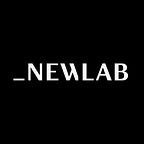By New Lab
The new strength isn’t about brute power. It’s not muscle or steel. It’s not an immovable object. It’s not built to last. Look instead to a string of code, a flexible, personalized set of data, expanding capabilities, enhancing and reacting to the environment. That’s the new strength. This fresh paradigm informs the work of two New Lab members, StrongArm Technologies and Studio Bitonti, which both wield data to create stronger, safer, more customized ways of interacting with the world around us.
Photography by Minu Han / Reporting by Andrea Thompson
For those who use their body as a tool — heavy lifting, repetitive motion, long shifts of pure physicality — strength isn’t abstract, and neither are the injuries and other risks faced every workday. Yet StrongArm Tech’s solution can be found in the cloud: a platform that uses algorithmic analysis of data — collected from the workers’ own bodies — to make real-time adjustments that enhance users’ natural abilities and create safer environments.
The company, founded by Sean Petterson and Michael Kim in 2012, started with a vision of “industrial athletes” — a term meant to give well-deserved status to the men and women whose jobs demand arduous labor, without the benefit of trainers, specialized gear, or multi-million-dollar salaries (looking at you, Tom Brady). At first, StrongArm focused on physical devices that augmented posture and form to encourage safer lifting and other motion.
Now, StrongArm has pivoted from increasing strength through external interventions to using data to reveal inherent strengths in these industrial athletes. The company’s FUSE platform collects data from a small sensor worn on a worker’s body, runs it through an algorithm, and relays the analysis to a user dashboard. The data can identify areas of risk, potential for injury, and drags on performance — and gives companies the ability to manage workflow in real time, rather than adjusting over weeks or months of study. “With data we are identifying when a person is naturally stronger and measuring their ability to work safely and productively,” explains Petterson, who is the company’s CEO. The communication platform allows “blue-collar workers to have a direct line to make an impact on the C-suite.”
Next up for StrongArm: a reimagined sensor, the V5, developed with the help of 10XBeta, another New Lab member. Based on feedback from their clients, the sensor, released last month, has 14 times the sensing power, double the battery life, and, says Petterson, “looks cooler.”
Above all, Petterson focuses on those industrial athletes — and they’re not an easy audience to impress. “This is a very no-bullshit industry,” Petterson notes. “But we can help them go home with less pain, spend the weekend with their kids, have a better life and a stronger career overall.”
“This is a very no-bullshit industry,” says Sean Petterson, CEO of StrongArm Tech. “But we can help them go home with less pain, spend the weekend with their kids, have a better life and a stronger career overall.”
At Studio Bitonti, a design consultancy that specializes in using additive manufacturing to create innovative materials and customized products, quality construction has evolved, says Francis Bitonti, founder and president of the studio, from “an operation of dexterity and physical skill” — old strength! — to one “represented numerically.” That fosters greater access, greater personalization, and greater flexibility to react quickly to changing markets and environments.
Bitonti has long been on the leading edge of additive manufacturing: creating the first functional 3D-printed metal table; constructing a 3D-printed dress for Dita von Teese (a black gown that fit like a glove, albeit a see-through one); devising a beautifully asymmetrical, lightweight scoliosis brace, the prototype of which was acquired by Cooper Hewitt. “We try to be the ones setting the pace,” says Bitonti.
In this new realm of materiality, the means of production becomes the consumer good. A few years ago, Bitonti predicted to an interviewer that, “the next generation of products will be digital files, not things.” Bitonti now concedes that his early ambitions — a vision in which additive manufacturing could be done at scale, without assemblies — outpaced the technology. “There are laws of physics!” he says wryly. But the studio’s next step — Genysis, an API that gives developers access to the mathematical formulas Studio Bitonti uses to create microstructures — advances toward that digital file future. Genysis has already been made available to Studio Bitonti’s current clients, and a wider launch is planned for the coming months.
As the stream of data — as a means to enhance our lives, make us smarter, more capable, and, yes, stronger — rises to a flood, value may lie more in an ability to be swept away than to endure. Bitonti, for one, believes that the everlasting object is a relic. “The last thing I want to create is a timeless design,” he says. Strength can’t be static; what we need is “agility, adaptability, an ability to be repurposed and reused,” he argues. “Rather than being timeless, maybe that thing is just really good at dying.”
